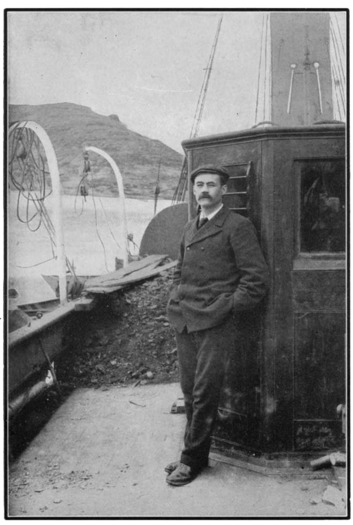DR. GRENFELL’S PARISH

“A DOCTOR ... THE PROPHET AND CHAMPION OF A PEOPLE”
Dr. Grenfell’s Parish
The Deep Sea Fishermen
By
NORMAN DUNCAN
Author of
“Doctor Luke of the Labrador”
New York Chicago Toronto
Fleming H. Revell Company
London and Edinburgh
Copyright, 1905, by
FLEMING H. REVELL COMPANY
THIRD EDITION
| New York: 158 Fifth Avenue |
| Chicago: 63 Washington Street |
| Toronto: 27 Richmond Street, W |
| London: 21 Paternoster Square |
| Edinburgh: 100 Princes Street |
TO
THE CREW OF THE “STRATHCONA”
| Henry Bartlett, | Skipper |
| Munden Clark, | Second Hand |
| William Percy, | First Engineer |
| John Scott, | Second Engineer |
| Archie Butler, | Hospital Hand |
| James Hiscock, | Cook |
| Alec Sims, | Ship’s Boy |
TO THE READER
This book pretends to no literaryexcellence; it has a far better reasonfor existence—a larger justification.Its purpose is to spread the knowledgeof the work of Dr. Wilfred T. Grenfell,of the Royal National Mission to Deep-SeaFishermen, at work on the coasts of Newfoundlandand Labrador; and to describethe character and condition of the folk whomhe seeks to help. The man and the missionare worthy of sympathetic interest; worthy,too, of unqualified approbation, of supportof every sort. Dr. Grenfell is indefatigable,devoted, heroic; he is more and even betterthan that—he is a sane and efficient worker.Frankly, the author believes that the readerwould do a good deed by contributing tothe maintenance and development of thedoctor’s beneficent undertakings; andregrets that the man and his work are presentedin this inadequate way and by soincapable a hand. The author is under obligationto the editors of Harper’s Magazine,of The World’s Work, and of Outing forpermission to reprint the contributed paperswhich, in some part, go to make up the volume.He wishes also to protest that Dr.Grenfell is not the hero of a certain work offiction dealing with life on the Labradorcoast. Some unhappy misunderstandinghas arisen on this point. The author wishesto make it plain that “Doctor Luke” wasnot drawn from Dr. Grenfell.
N. D.
College Campus,
Washington, Pennsylvania, January 25, 1905.